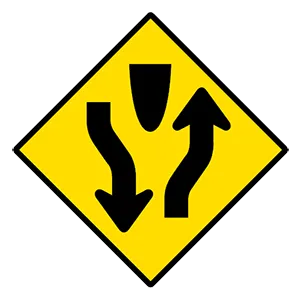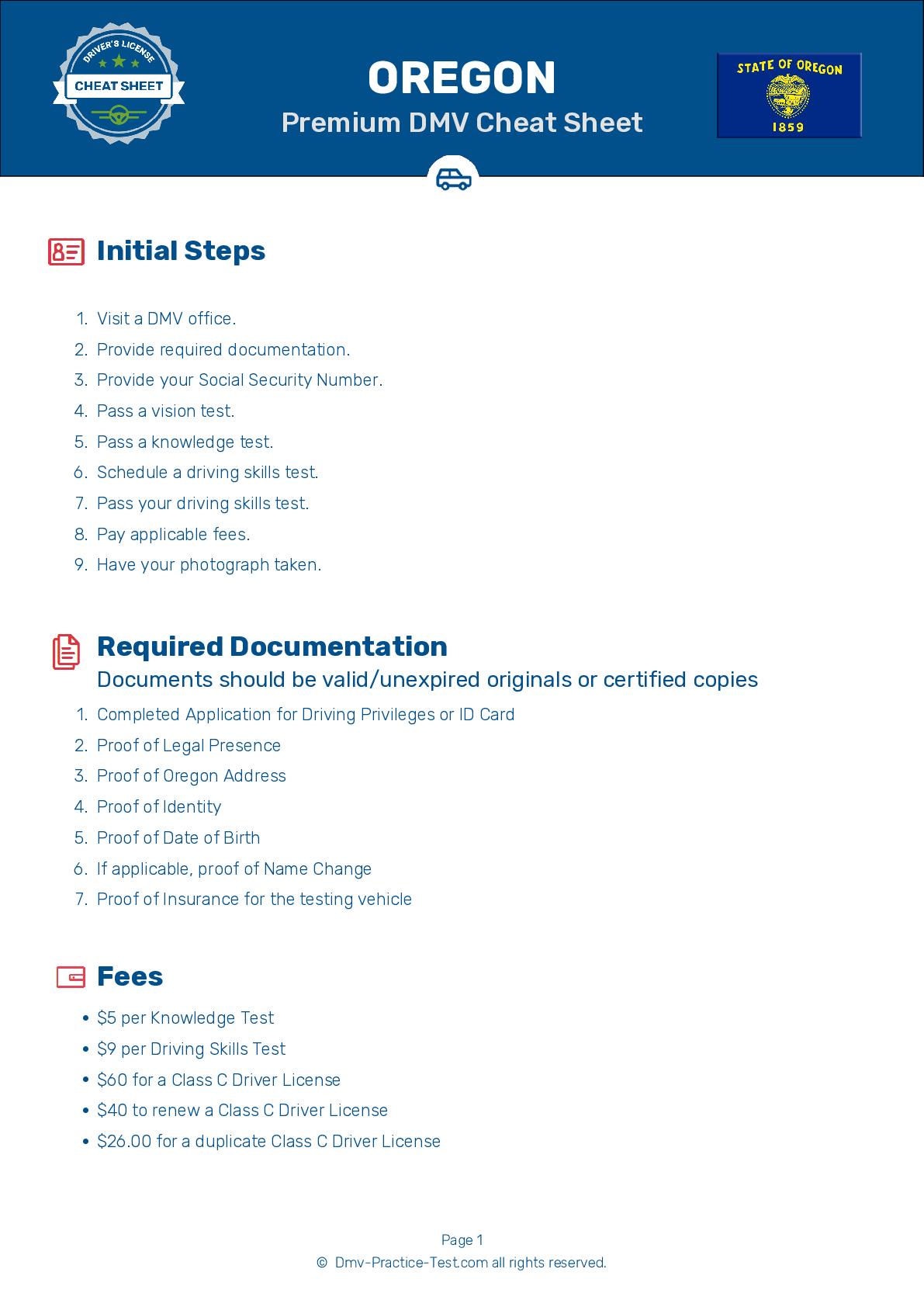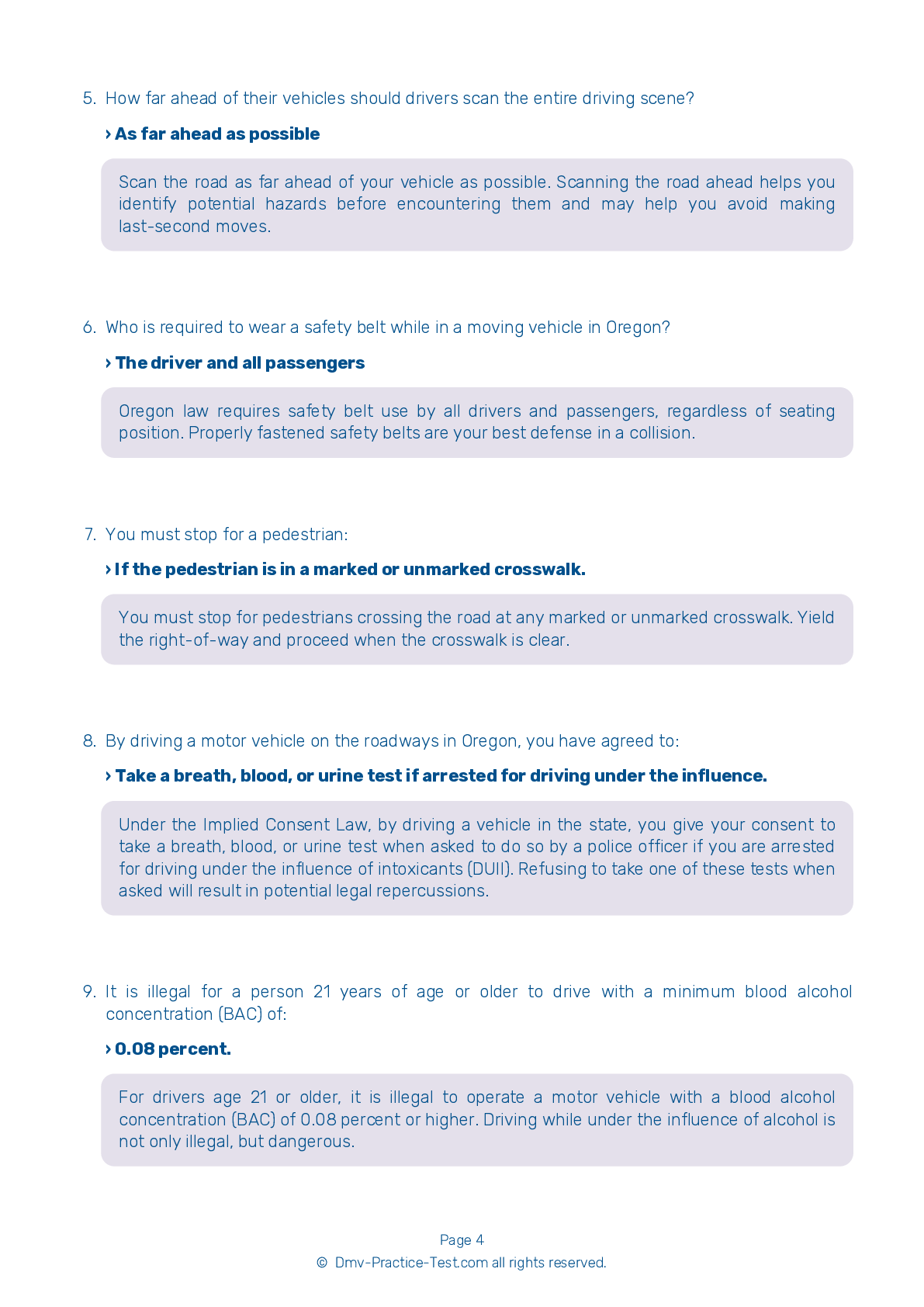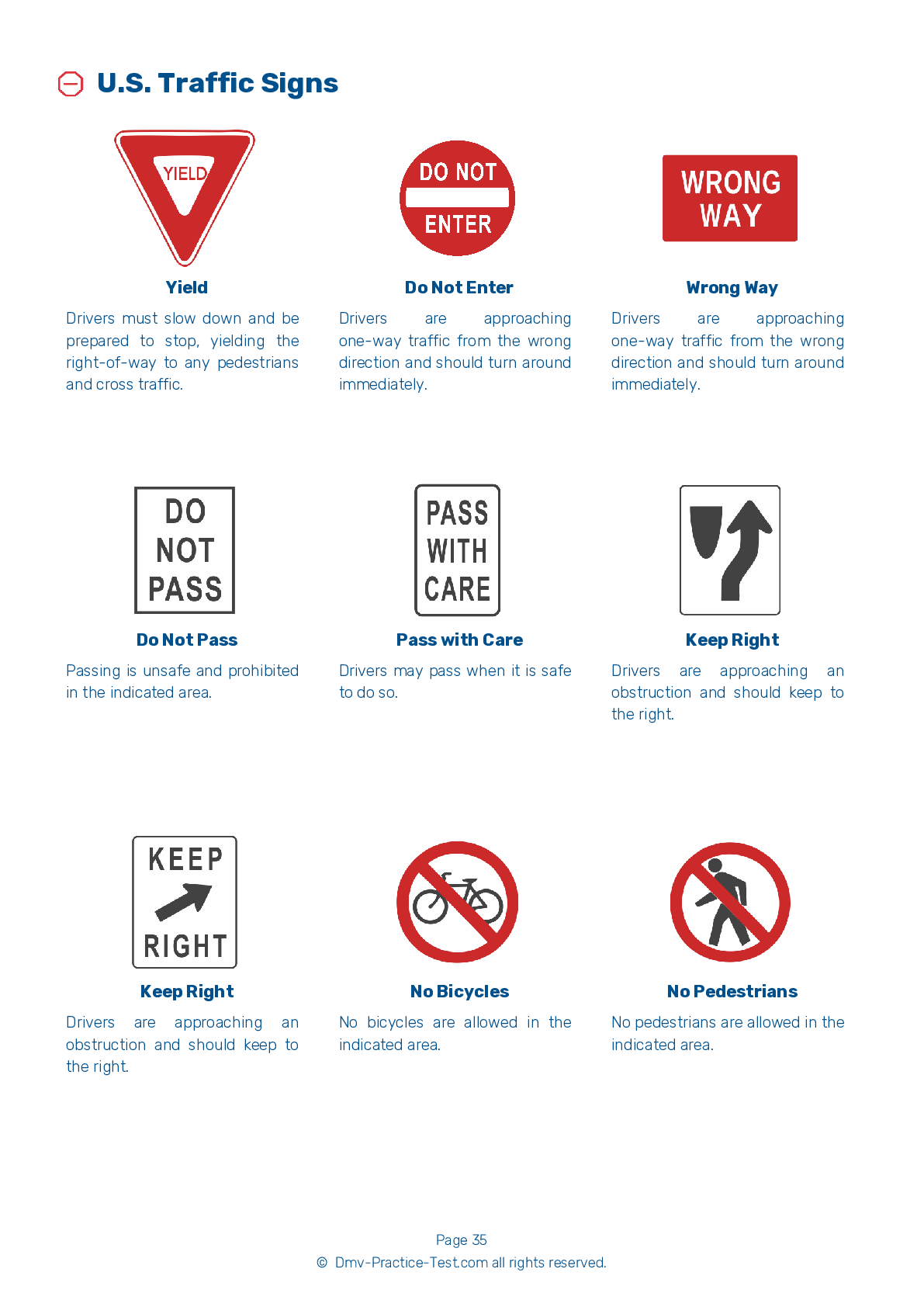FREE Oregon DMV Practice Test #9 Page 2 of 5
The practise exams for the Oregon DMV have been updated for January 2025. It includes questions based on the most important traffic signals and regulations for 2025 from the Oregon Driver Handbook. To study for the DMV driving permit test and driver's licence exam, use actual questions that are very similar (often identical!) to the DMV driving permit test and driver's licence exam.
Each question on the practise exam has a tip and explanation to help you recall the ideas. Questions about traffic rules, traffic signs, and driving statutes, as well as knowledge from the Driver Handbook, will be included in the written portion of the official Oregon DMV test.
You must properly answer 28 of the 35 questions to receive a passing mark. Use the Oregon Department of Motor Vehicles' practise exam to help you prepare for your instruction permit or driver's licence.
The DMV exam is offered in a variety of languages.
Using any form of testing help will result in an automatic fail, and the DMV may take further action against your driver's licence, so avoid it.
8 . If two drivers arrive at the same time to an open intersection:
If you arrive to an open intersection at the same time as a vehicle to your right, you should yield the right-of-way to that vehicle. You may then proceed when it is safe to do so.
9 . Seat belts are most effective when they are worn by:
When you drive, make sure each person in your vehicle wears a seat belt. In the event of a crash, a person without a seat belt becomes a flying object and a danger to each person in the vehicle.
10 . Which of the following about winter driving is not true?
You should not use cruise control on snow, in rain, in fog, or under similar hazardous conditions. Winter is the most difficult driving season and requires extra caution from drivers. It is important to consistently check your antifreeze and windshield washer fluid levels. Using snow tires can increase a vehicle's traction on the surface of slippery roads.
11 . Increasing your vehicle’s speed:
The faster you drive, the smaller your field of vision becomes. As your speed increases and your field of vision decreases, you must be extra alert to potential hazards.
12 . This road sign means:

This sign indicates that a divided highway begins ahead. The road splits into two one-way roadways separated by a median or divider. You must keep to the right.
13 . Blood alcohol content (BAC) depends on each of the following, except:
Your blood alcohol content (BAC) depends on how much alcohol you drink, how much time passes between drinks, and your weight. It is not affected by the type of alcoholic beverages you drink, your level of physical fitness, or how well you can "hold your liquor."
14 . If another driver cuts you off in traffic, you should:
To avoid the dangers of road rage, you should never take it personally if another driver cuts you off in traffic. Just let it go and continue driving safely.
See the exact questions that will be on the 2025 Oregon DMV exam.
99.2% of people who use the cheat sheet pass the FIRST TIME
LT gives us an insight on how the cheat sheet provided her with all the study questions she needed before taking her test.
Joe initially studied with the handbook and failed his test, he eventually found us online, studied and pass his test the first time around.



